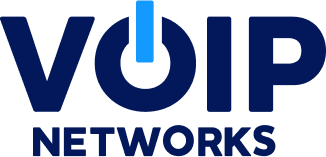An Application Programming Interface, or API, may sound like something that makes an engineer’s pulse start to race. But for many organizations, an API can expand and streamline operations, add capabilities, and connect a communications system with other software quickly and seamlessly.
Here’s what an API is, how it works, and what it can do for an organization’s operations.
Making Connections
In non-technical terms, an API connects two pieces of software and helps them communicate. This connection creates a world of possibilities when it comes to data flowing from one piece of software to another.
Some of the most popular Client Relationship Management (CRM) software solutions—including Salesforce, Microsoft Dynamics, Fiserv, NetSuite, Zendesk, and a multitude of others—have APIs that link the application with an organization’s telecommunications system. Here’s one common scenario:
- An existing client calls in with a question, order, or issue, and the call is routed to an agent.
- The system recognizes the phone number, and the client’s Salesforce record appears on the client service specialist’s screen.
- The system can also recognize the speaker’s voice, using voice biometrics, to identify and authenticate the calling party.
- The agent can see the client’s order history, previous call records, and all products/services ordered.
- The agent deals with the client’s issue and adds notes.
- Any product or service the client ordered during the call is automatically sent to fulfillment, and Salesforce sends a confirmation email to the client.
An API can also integrate with an Interactive Voice Response (IVR) system. If the client recently placed an order, for example, the system can notify the client that the order has shipped and when it’s anticipated to arrive. The system can then ask the client if they still need to speak to someone. The IVR can greet the client with other timely information as well, such as scheduled service calls or order status.
In the financial industry, credit unions and banks can use APIs to facilitate transactions, account balances, fund transfers, review of check status, and more.
Custom API Solutions
Many CRMs and other popular software packages have built-in APIs to allow integration with business operations. This standard feature makes life convenient for the millions of customers using those platforms, but what about organizations and industries that use more specialized software?
The right communications partner can create a specialized API that connects UCaaS solutions with the systems that run business operations. For instance, VOIP Networks has developed an API that can seamlessly link banks and credit unions with their Fiserv software.
Our in-house, U.S.-based technical experts can support in-house engineering teams to harness the power of an API to integrate with hundreds of CRMs and other software packages. The results:
- Improved response time and other key call center metrics
- Increased operational efficiency
- No errors from having to rekey data
- Improved client satisfaction
VOIP Networks designs, installs, and supports UCaaS telecommunications technology for organizations of all types. We can also help clients integrate their UCaaS system with their operations. For more information, or to discuss your communications needs, please contact us.






